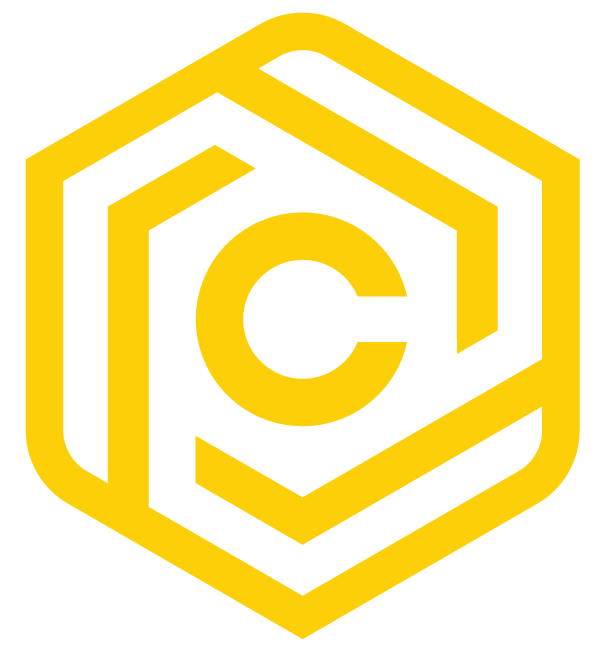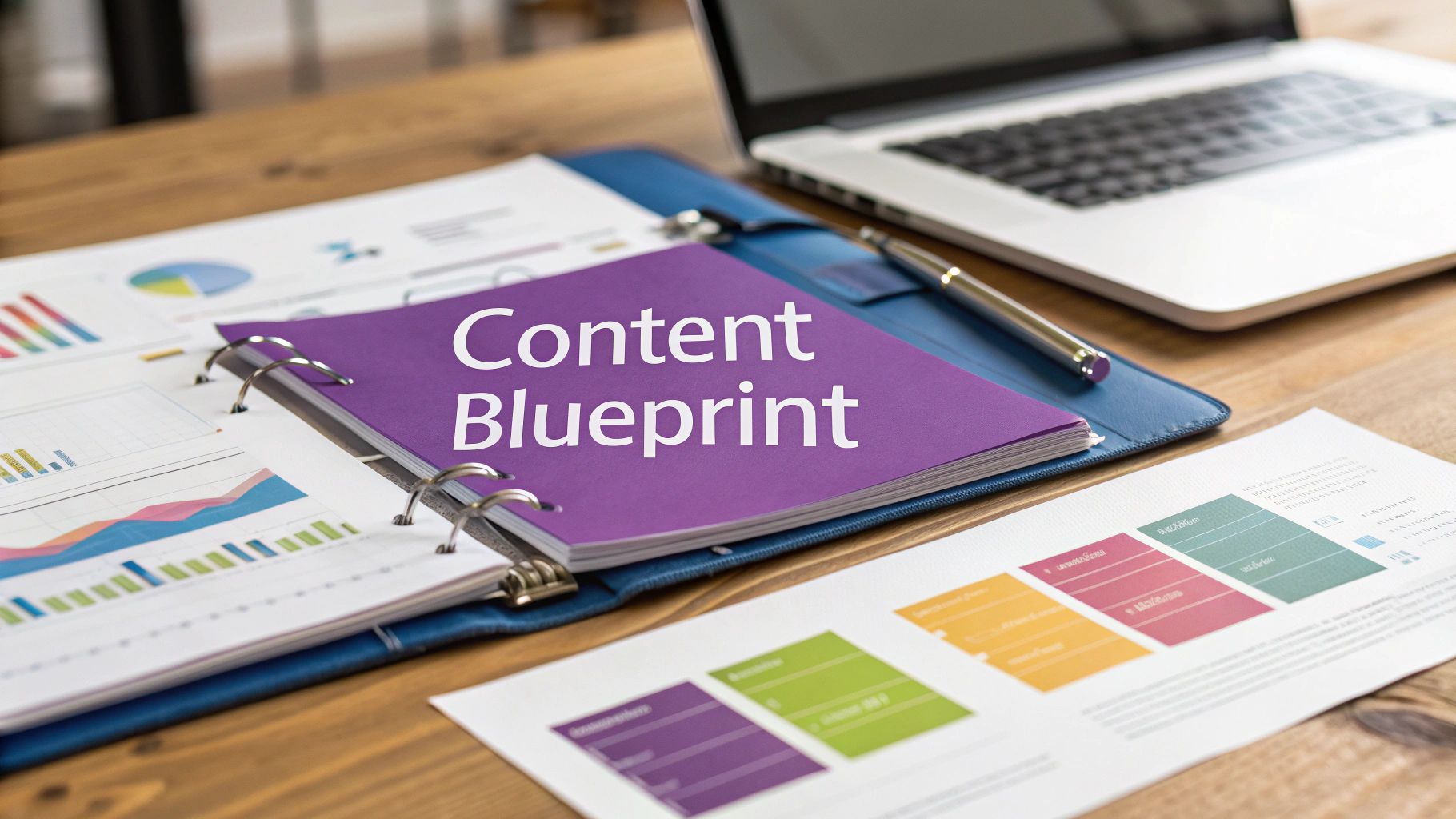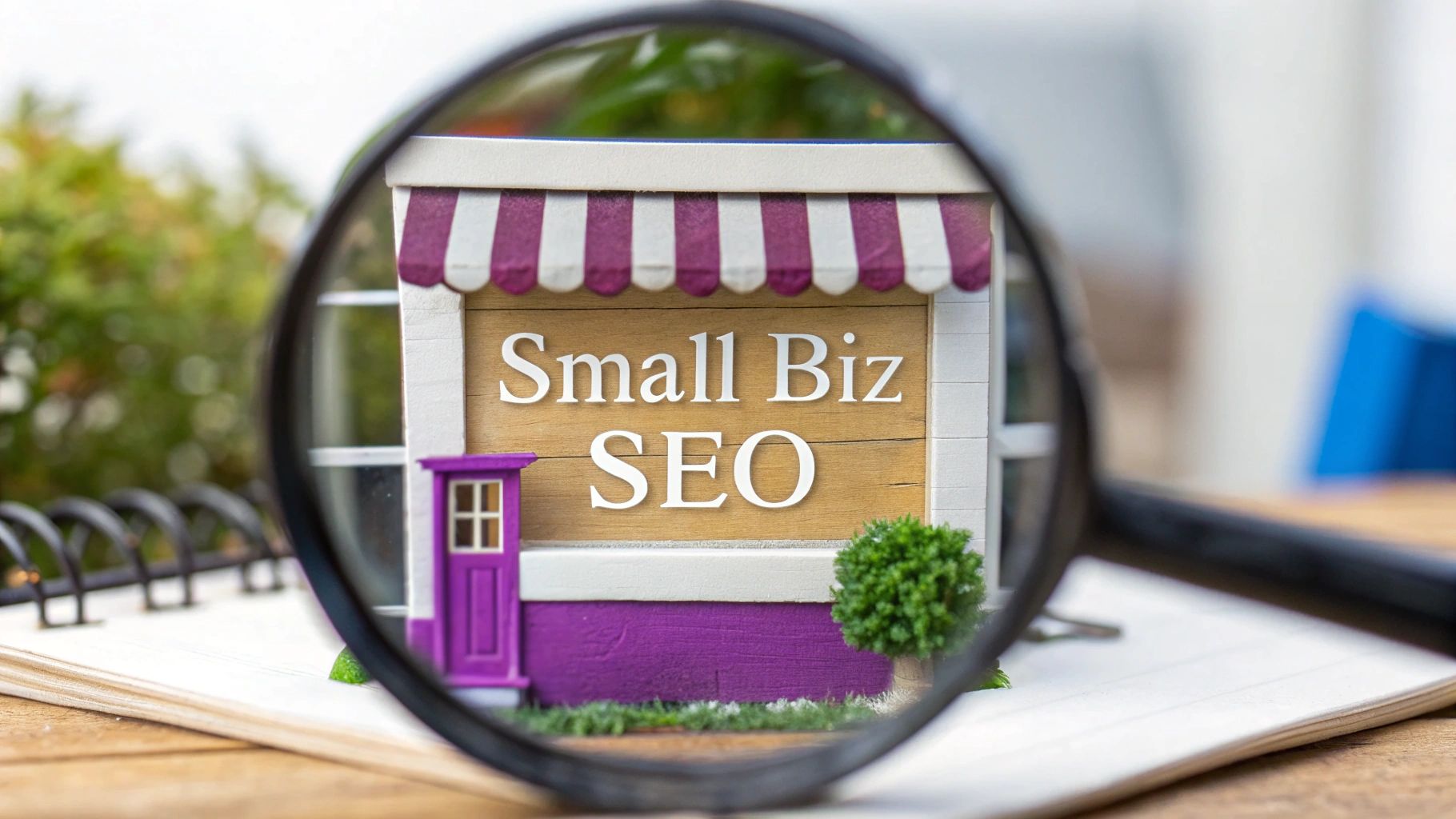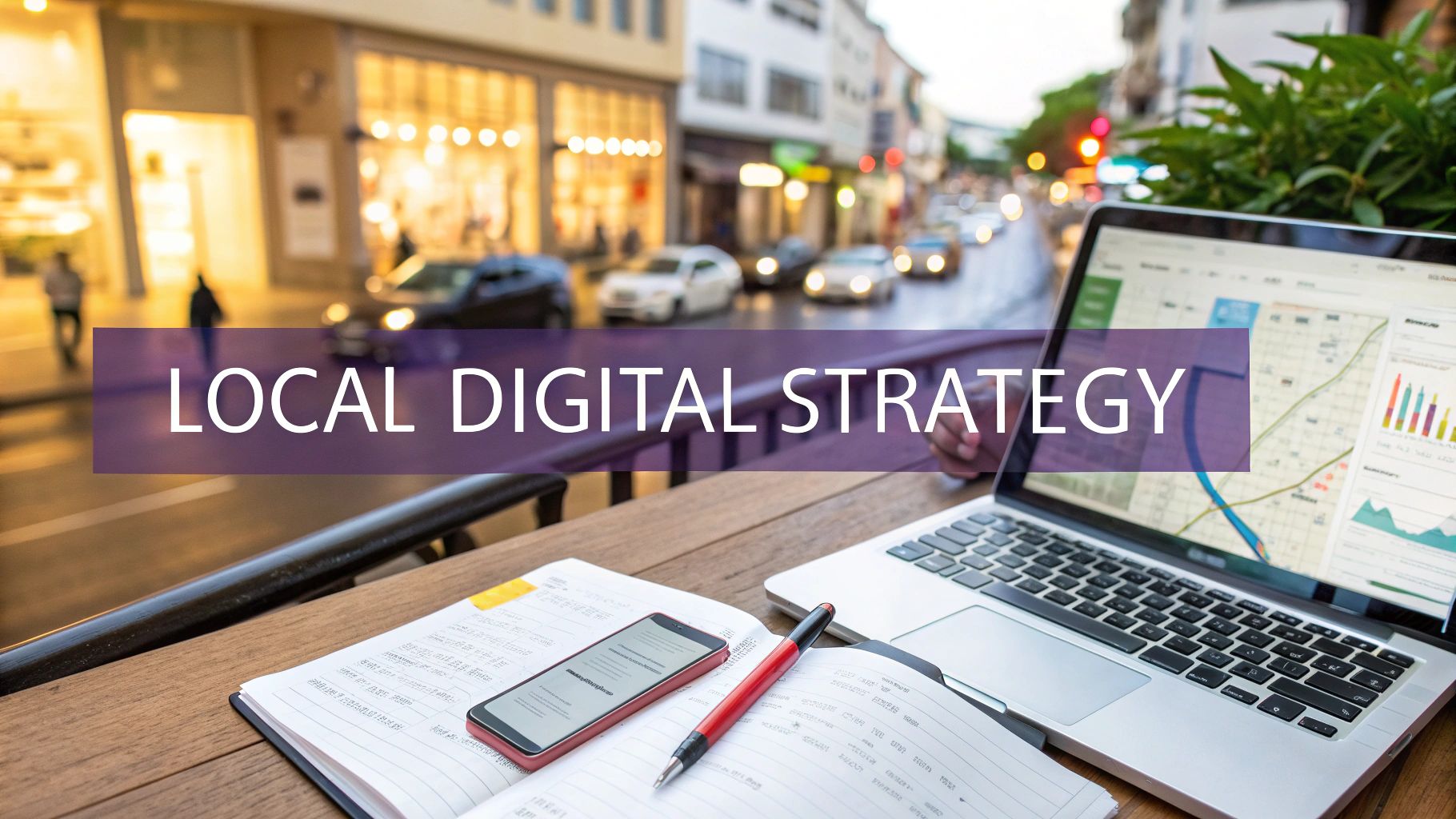Unlocking Growth: The Ultimate Marketing Playbook for Australian Small Businesses
In a competitive market, having a fantastic product or service is only half the battle. For Australian small businesses, the key to sustainable growth is anchored in smart, strategic marketing. Yet, with countless channels and tactics available, knowing where to focus your efforts can be daunting, especially when time and resources are limited. This guide is designed to cut through the noise and provide a clear, actionable roadmap.
We have compiled 10 proven small business marketing strategies that blend powerful digital methods with effective offline approaches. This is not a list of vague ideas; it’s a comprehensive playbook filled with practical implementation steps, real-world scenarios, and expert tips tailored for the Australian business environment. Whether you are a local Brisbane brick-and-mortar store aiming for more foot traffic, an e-commerce brand looking to optimise sales, or a professional services firm seeking to enhance your online visibility, these insights are for you.
Forget generic advice. We will explore specific techniques across content marketing, local SEO, customer loyalty, and strategic partnerships. Each section is structured to provide you with the tools necessary to attract new customers, build lasting relationships, and drive measurable results. Consider this your guide to transforming your marketing from a set of disjointed activities into a powerful, integrated engine for genuine business growth. Let’s dive into the strategies that will define your success.
1. Content Marketing
Content marketing is a foundational strategy focused on creating and distributing valuable, relevant, and consistent material to attract and retain a clearly defined audience. Unlike direct advertising that pushes a product, this approach pulls customers in by offering genuine value first. It is one of the most powerful small business marketing strategies because it builds a relationship with potential customers, establishing your brand as a trusted authority. The ultimate goal is to drive profitable customer action by becoming an indispensable resource.
This can take many forms, from blog posts and how-to guides to videos and podcasts. For instance, a local Brisbane-based accounting firm could create blog posts that simplify tax laws for sole traders, or a cafe could share videos demonstrating latte art techniques. The key is to address your audience's specific pain points and interests directly.
Actionable Content Marketing Tips
- Define Your Niche: Identify the specific problems your target audience faces. What questions are they searching for online? Use tools like AnswerThePublic or Google Trends to uncover relevant topics.
- Create a Content Calendar: Consistency is crucial. Plan your content weeks or months in advance to ensure a steady flow of valuable information. This helps you stay organised and avoids last-minute scrambling.
- Repurpose and Distribute: A single blog post can be turned into a series of social media updates, an infographic, a short video, or a podcast segment. Distribute your content across all relevant channels to maximise its reach and impact.
Why Content Marketing Works
Content marketing is not just about creating content; it's about building an asset that appreciates over time. The following infographic summarises the core benefits of integrating this strategy.

As the data shows, the strategy excels at building long-term organic traffic and establishing trust, which are vital for sustainable business growth in a competitive digital landscape.
For a deeper understanding of how to build a content marketing plan from scratch, this video from HubSpot provides an excellent overview.
2. Social Media Marketing
Social media marketing involves using platforms like Facebook, Instagram, and LinkedIn to connect with your audience, build your brand, and drive website traffic. Far more than just posting updates, this strategy centres on creating a community around your business. It is one of the most dynamic small business marketing strategies as it allows for direct, real-time interaction with customers, humanising your brand and fostering loyalty.

Effective social media marketing means publishing engaging content, listening to follower feedback, analysing performance, and running targeted advertisements. For example, beauty brand Glossier built a cult following through user-generated content on Instagram, while many local gyms use private Facebook Groups to foster a strong member community. For B2B companies, a well-defined LinkedIn presence is often a primary source for generating high-quality leads. Explore how to use LinkedIn marketing effectively to see how powerful a single platform can be.
Actionable Social Media Marketing Tips
- Choose Platforms Wisely: Don't stretch yourself thin. Focus on the one or two platforms where your target audience is most active. A visual brand like a bakery will thrive on Instagram, while a consulting firm will find more traction on LinkedIn.
- Post Consistently with Quality: Develop a realistic posting schedule and stick to it. Prioritise high-quality visuals, especially video, as they generate significantly more engagement than text-only posts. Consistency builds expectation and keeps your brand top-of-mind.
- Engage Authentically: Social media is a two-way conversation. Respond promptly and genuinely to comments and messages, both positive and negative. This shows you value your customers and are listening to their feedback.
- Utilise Hashtags Strategically: Use a mix of broad, niche, and branded hashtags to increase the discoverability of your posts. Research which tags are popular within your industry and local area to reach a relevant audience.
Why Social Media Marketing Works
This strategy excels at building brand personality and fostering direct customer relationships in a way that few other channels can. It allows you to gather immediate feedback, manage your reputation in real-time, and drive targeted traffic with precision. To maximise your social media efforts, explore additional powerful social media tips for small businesses that can drive tangible results. By engaging where your customers spend their time, you build a loyal following that translates into sustainable business growth.
3. Email Marketing
Email marketing is a powerful form of direct marketing that uses electronic mail to communicate commercial messages to a targeted audience. It allows businesses to nurture leads, inform customers about new products or offers, and build lasting relationships directly in their inbox. As one of the most effective small business marketing strategies, it boasts an exceptionally high return on investment because it leverages a list of contacts who have already expressed interest in your brand. This direct line of communication is invaluable for driving conversions and fostering loyalty.
This strategy can be adapted for any industry. For instance, e-commerce giants like Amazon use sophisticated algorithms to send personalised product recommendations based on browsing history. On a local level, a Brisbane restaurant could send out weekly emails with weekend specials and a booking link, while a B2B software company might use an automated onboarding sequence to guide new users through its features. The goal is to deliver timely, relevant, and valuable content that encourages action.
Actionable Email Marketing Tips
- Build Your List Organically: Never buy an email list. Instead, offer a valuable "lead magnet" like a discount code, a free guide, or an exclusive template in exchange for an email address. Place sign-up forms prominently on your website and social media profiles.
- Craft Compelling Subject Lines: Your subject line is the first, and sometimes only, impression you make. Keep it short, intriguing, and honest. Use personalisation (like the recipient's name) and A/B test different versions to see what resonates with your audience and improves open rates.
- Segment for Personalisation: Group your subscribers based on their behaviour, demographics, or purchase history. Segmenting your list allows you to send highly targeted messages that are far more relevant and effective than a generic "email blast" to everyone.
- Include a Clear Call-to-Action (CTA): Every email should have a purpose. Whether you want them to "Shop Now," "Read More," or "Book a Consultation," use a clear, visually distinct button that tells subscribers exactly what you want them to do next.
Why Email Marketing Works
Email marketing is a cornerstone strategy because you own the communication channel, unlike social media where algorithms can limit your reach. It allows for deep personalisation at scale, making customers feel understood and valued. By consistently delivering value, you build trust and keep your brand top-of-mind, turning subscribers into repeat customers and advocates.
To ensure your campaigns are effective, it is crucial to avoid common pitfalls that can harm your deliverability and reputation. To learn more, you can explore common email marketing mistakes people make on Caydpro.com.
4. Search Engine Optimization (SEO)
Search Engine Optimisation, or SEO, is the practice of increasing the quantity and quality of traffic to your website through organic search engine results. This powerful digital marketing method involves optimising your website’s content, technical foundation, and authority to rank higher in search engines like Google. For a small business, a strong SEO presence means potential customers can find you at the exact moment they are searching for the products or services you offer, making it one of the most effective small business marketing strategies for long-term growth.
The goal is to signal to search engines that your website provides the most relevant and valuable answer to a user's query. For example, a local plumber in Brisbane could use SEO to appear at the top of the search results for “emergency plumber near me,” capturing high-intent customers. Similarly, a boutique e-commerce store could rank for specific product keywords like “handmade leather tote bag Australia,” driving targeted traffic directly to their product pages.
Actionable SEO Tips
- Target Long-Tail Keywords: Instead of competing for broad, highly competitive terms, focus on more specific phrases, known as long-tail keywords. For example, rather than “cakes,” target “vegan birthday cake delivery Brisbane.” These often have lower competition and attract more qualified leads.
- Prioritise Local SEO: If you have a physical presence, optimise for local search. Create and fully populate a Google Business Profile, ensure your business name, address, and phone number are consistent across the web, and encourage customer reviews.
- Build Quality Backlinks: A backlink is a link from another website to yours. Earn these by creating exceptional content that other reputable sites in your industry want to reference. This builds your site's authority and credibility in the eyes of search engines.
- Optimise for Mobile and Speed: Google prioritises websites that offer a great user experience. Ensure your site loads quickly and is fully responsive, meaning it looks and functions perfectly on mobile devices, tablets, and desktops.
Why SEO Works
SEO is a fundamental strategy because it builds a sustainable, long-term asset. Unlike paid advertising, where traffic stops when you stop paying, a well-ranking page can generate organic traffic for years. It establishes your business as a credible authority in your field, building trust with potential customers before they even click on your website. This approach delivers a consistent stream of highly relevant visitors, leading to a higher return on investment and scalable business growth.
5. Pay-Per-Click (PPC) Advertising
Pay-Per-Click (PPC) advertising is an online model where you pay a fee each time one of your ads is clicked. Unlike organic methods that take time to build momentum, PPC offers a direct way to buy visits to your website, generating immediate traffic and leads. It is one of the most powerful and scalable small business marketing strategies because it allows you to reach highly targeted audiences at the exact moment they are searching for products or services like yours, providing instant visibility and measurable results.
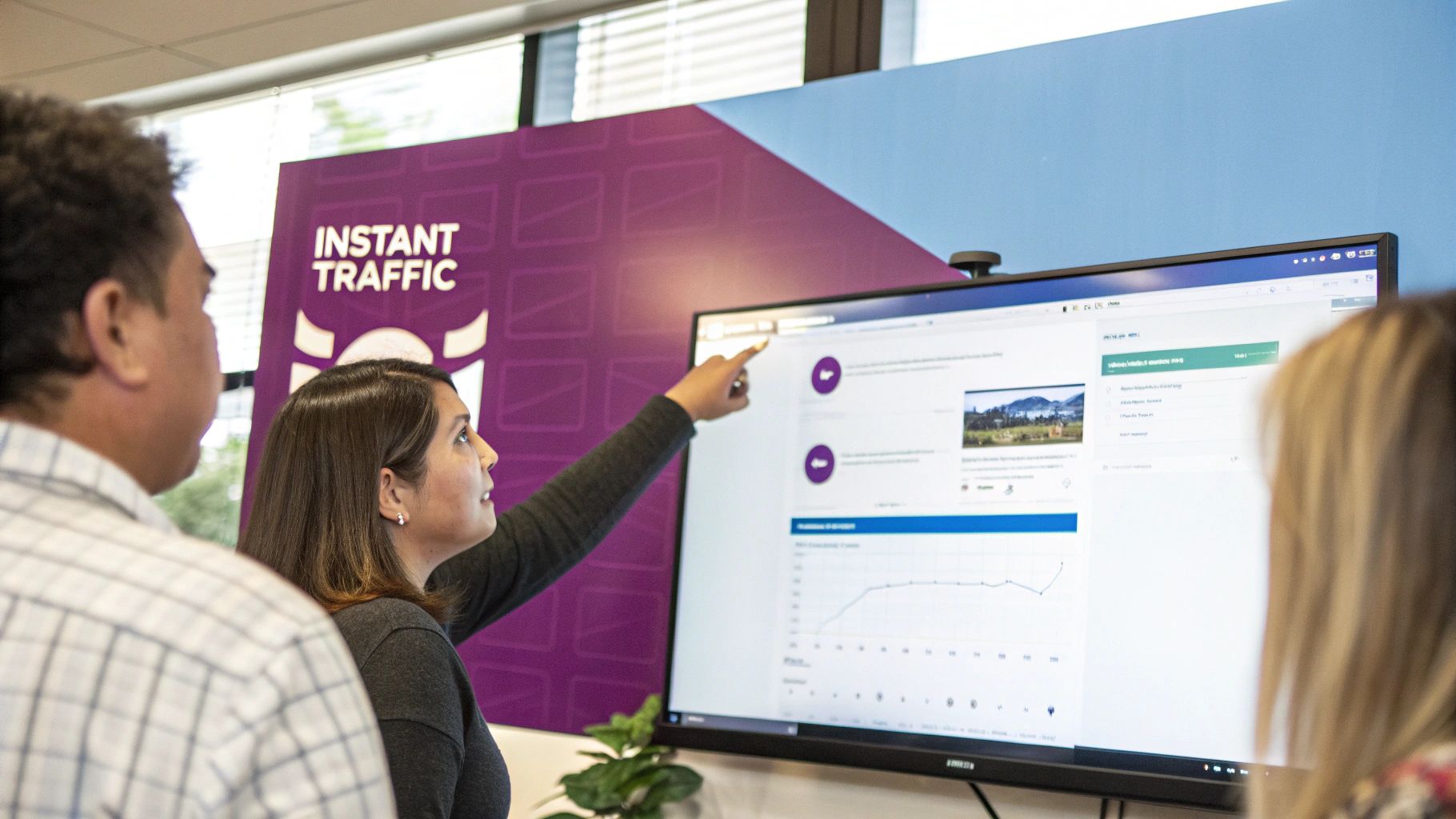
This strategy can be deployed across various platforms. For example, a Brisbane-based dentist can use Google Ads to appear at the top of search results for "teeth whitening services", while a local cafe could run Facebook Ads promoting a weekend brunch special to people within a 5km radius. E-commerce stores can use PPC to drive traffic for seasonal sales, and professional service firms can target specific job titles or industries on LinkedIn to generate high-quality business leads.
Actionable PPC Advertising Tips
- Start with a Controlled Budget: Begin with a small, manageable budget to test different ads, keywords, and audiences. Once you identify what works, you can confidently scale your investment in the successful campaigns for a better return.
- Utilise Negative Keywords: Actively build a list of negative keywords to prevent your ads from showing for irrelevant searches. This simple step stops you from wasting money on clicks from people who are not looking for what you offer.
- Optimise Landing Pages: Your ad is only half the battle. Ensure the landing page where users arrive is directly relevant to the ad's promise, easy to navigate, and has a clear call-to-action to maximise conversions.
Why PPC Advertising Works
PPC is highly effective because it offers unparalleled control and speed. You can turn campaigns on or off instantly, adjust budgets in real-time, and target users with incredible precision based on demographics, location, interests, and search behaviour. This makes it an ideal strategy for businesses that need to generate leads or sales quickly, test new market offers, or dominate search results for high-intent commercial keywords.
For a comprehensive guide on launching your first Google Ads campaign, this tutorial from Google provides an excellent starting point.
6. Local SEO and Google My Business
Local SEO is a specialised form of search engine optimisation that focuses on improving your visibility in local search results on Google. When potential customers search for terms like "pizza near me" or "accountant in Brisbane", this strategy ensures your business appears. It's one of the most critical small business marketing strategies for any company with a physical location or that serves a specific geographic area, from a local cafe to a mobile car detailer. The goal is to connect with nearby customers at the exact moment they are looking for your products or services.
The cornerstone of Local SEO is your Google Business Profile (formerly Google My Business). This free tool allows you to manage how your business appears on Google Search and Maps, showcasing vital information like your address, opening hours, phone number, and customer reviews. For example, an auto repair shop in Fortitude Valley that optimises its profile will be more likely to appear in the coveted "Map Pack" when a local driver searches for car servicing.
Actionable Local SEO Tips
- Claim and Fully Optimise Your Profile: Complete every section of your Google Business Profile. This includes adding high-quality photos, selecting all relevant business categories, and writing a compelling business description. A 100% complete profile is favoured by Google.
- Encourage and Respond to Reviews: Actively ask satisfied customers for reviews. Positive reviews significantly boost your local ranking and build social proof. Make sure to respond to all reviews, both positive and negative, to show you are engaged.
- Build Local Citations: Ensure your business name, address, and phone number (NAP) are consistent across all online directories like Yelp, TrueLocal, and other industry-specific sites. Inconsistencies can confuse search engines and harm your ranking.
- Utilise Google Posts: Regularly publish updates, offers, events, and new products directly to your profile using the Google Posts feature. This keeps your listing fresh and provides more information to potential customers.
Why Local SEO Works
For brick-and-mortar businesses, Local SEO is not optional; it is the modern-day equivalent of being listed in the phone book. It directly targets customers with high purchase intent in your immediate vicinity, making it an incredibly efficient and high-return marketing channel. By dominating local search results, you capture qualified leads before your competitors do, driving tangible foot traffic and phone calls.
For a comprehensive walkthrough on dominating the local search landscape, The Definitive Guide to Ranking in the Google Map Pack offers an excellent deep dive.
7. Referral and Word-of-Mouth Marketing
Referral and word-of-mouth marketing is a strategy that leverages your existing customer base to attract new ones. It transforms satisfied customers into active brand advocates by encouraging them to share their positive experiences. This approach is one of the most trusted small business marketing strategies because it relies on genuine recommendations from friends and family, which carry far more weight than traditional advertising. It involves both organic, unsolicited praise and structured programs that incentivise sharing.
The core idea is to make your product or service so good that people naturally want to talk about it, then make it incredibly easy for them to do so. For example, a local Brisbane-based mechanic who does an exceptional job might get referrals naturally. To amplify this, they could offer a $25 credit to both the existing customer and the new one they refer. Similarly, an e-commerce store might implement a system like Dropbox's famous program, which offered extra storage space for every successful referral.
Actionable Referral Marketing Tips
- Make It Simple: The referral process must be frictionless. A customer should be able to refer someone in just a few clicks or with a simple shareable code. Complexity is the enemy of participation.
- Offer Valuable Incentives: The reward must be compelling for both the referrer and the new customer. This could be a discount, store credit, a free product, or early access to new features. A dual-sided incentive often works best. For real-world inspiration, exploring powerful referral marketing examples can provide valuable insights into successful campaigns.
- Promote Your Program: Don't expect customers to find your referral program on their own. Promote it through email newsletters, on social media, on your website's thank-you page, and even in-store.
Why Referral Marketing Works
This strategy capitalises on the powerful psychological principle of social proof. People trust people. A recommendation from a known source bypasses the scepticism often directed at brand messaging, leading to higher conversion rates and lower acquisition costs. The customers you acquire through referrals are often more loyal and have a higher lifetime value, as they arrive with a pre-existing layer of trust. This makes it a highly efficient and sustainable growth engine for any small business.
8. Partnership and Collaboration Marketing
Partnership and collaboration marketing is a powerful approach where two or more businesses join forces to cross-promote products, services, or content to their collective audiences. Instead of competing for the same customers, this strategy focuses on leveraging shared strengths for mutual benefit. It is one of the most resource-efficient small business marketing strategies because it allows you to tap into an established, relevant audience, instantly boosting your reach and credibility without a massive budget. The core idea is to find a non-competing business that serves a similar customer demographic and create a campaign that offers value to both sets of customers.
This can be executed in numerous creative ways. For example, a Brisbane-based fitness trainer could collaborate with a local nutritionist to offer a joint wellness package, or a software company could integrate its tool with another complementary platform and co-host a webinar for their users. Another common example is a local coffee shop partnering with a nearby bookstore to offer a discount to customers who show a receipt from the other business. The key is that the partnership feels natural and genuinely benefits the consumer.
Actionable Partnership and Collaboration Marketing Tips
- Choose Partners with Aligned Values: Seek out businesses whose brand, values, and customer base align with yours. A mismatch in reputation or target audience can confuse customers and damage your brand.
- Establish Clear Goals and Expectations: Before launching a campaign, agree on specific, measurable objectives. Define what each party will contribute, the timeline, and how you will track success. Put it in writing with a formal partnership agreement.
- Create a Unique Value Proposition: Don’t just cross-promote. Develop a special, collaborative offering that is exclusive to the partnership. This could be a bundled product, a joint discount, or co-created content that provides unique value.
Why Partnership and Collaboration Marketing Works
This strategy is highly effective because it is built on trust and shared value. When a business your customers already trust recommends you, it acts as a powerful endorsement, bypassing the usual scepticism associated with traditional advertising. It’s a cost-effective way to generate high-quality leads, enter new markets, and enhance your brand’s authority. By pooling resources and audiences, small businesses can achieve a level of market impact that would be difficult and expensive to accomplish alone, making it a cornerstone of intelligent business growth.
9. Networking and Community Building
Networking and community building is a relationship-focused marketing strategy centred on creating genuine connections with other business owners, potential clients, and industry professionals. Instead of directly selling, this approach involves actively participating in online and offline communities to build trust and mutual support. It is one of the most enduring small business marketing strategies because people prefer to do business with those they know, like, and trust. The objective is to become a recognised and valued member of your professional and local community, leading to referrals, partnerships, and direct clients.
This strategy can be executed in various ways. For instance, a Brisbane-based graphic designer could join local startup meetups to connect with new entrepreneurs needing branding services, or a B2B software provider could actively participate in industry-specific LinkedIn groups. The core principle is to offer value and build authentic relationships first, which naturally cultivates business opportunities over time. It transforms cold outreach into warm introductions, significantly improving conversion rates.
Actionable Networking and Community Building Tips
- Give Before You Get: Focus on offering help, advice, or connections to others without expecting an immediate return. This generosity builds social capital and a positive reputation that pays dividends in the long run.
- Prepare a Clear Elevator Pitch: Be ready to describe what your business does, who it helps, and what makes it unique in under 30 seconds. A concise, compelling pitch makes you memorable and easy for others to refer.
- Follow Up Promptly: After meeting someone, send a personalised follow-up message within 24-48 hours. Reference your conversation to strengthen the connection and suggest a clear next step, like a coffee meeting or sharing a useful resource.
Why Networking and Community Building Works
This strategy thrives on the power of human connection and reciprocity. Unlike paid advertising, which stops when the budget runs out, a strong network is a sustainable asset that generates high-quality leads through referrals and word-of-mouth. It is particularly effective for service-based businesses and B2B companies where trust is a major factor in the purchasing decision. Building a community around your brand creates loyal advocates who will promote your business organically.
10. Customer Retention and Loyalty Programs
Acquiring new customers is important, but retaining existing ones is far more cost-effective and crucial for long-term success. A customer retention strategy focuses on keeping your current customers engaged, satisfied, and returning for more. This approach centres on maximising customer lifetime value by building strong, lasting relationships. It is one of the most impactful small business marketing strategies because loyal customers not only spend more but also act as brand advocates.
This can be achieved through various tactics, most notably loyalty programs. For instance, a local Brisbane cafe might offer a simple punch card where the tenth coffee is free. Similarly, an e-commerce store could implement a points-based system where customers earn rewards for purchases, reviews, and referrals, much like Sephora's successful Beauty Insider program. The core idea is to reward repeat business and make customers feel valued for their continued support.
Actionable Customer Retention Tips
- Keep It Simple: Design your loyalty program to be straightforward and easy to understand. Complicated rules can deter participation. The value proposition should be immediately clear to the customer.
- Provide Immediate Value: Offer a small, instant reward for signing up. This creates a positive first impression and encourages customers to engage with the program from day one, providing a quick win.
- Personalise the Experience: Use customer data to tailor rewards and communications. Acknowledge birthdays, recommend products based on past purchases, and offer exclusive deals that align with their specific interests.
- Communicate Regularly: Don't let customers forget about their benefits. Send regular updates about their points balance, new rewards, or exclusive member-only offers to keep the program top-of-mind.
Why Customer Retention Works
Focusing on retention directly impacts your bottom line. It's widely recognised that it costs significantly more to attract a new customer than to keep an existing one. Loyal customers tend to spend more over time and are less sensitive to price changes. They also provide invaluable feedback and generate positive word-of-mouth, which is a powerful and free marketing tool. By investing in the customers you already have, you build a stable, predictable revenue base and a community of advocates around your brand, fostering sustainable growth.
Small Business Marketing Strategies Comparison
| Marketing Strategy | Implementation Complexity | Resource Requirements | Expected Outcomes | Ideal Use Cases | Key Advantages |
|---|---|---|---|---|---|
| Content Marketing | Medium to high (requires planning and creativity) | Content creators, SEO tools, time | Long-term brand authority, organic traffic | Building brand trust, educating audience | Cost-effective, builds credibility, SEO benefits |
| Social Media Marketing | Medium (platform management, content creation) | Social media managers, design resources | Real-time engagement, brand awareness | Audience interaction, viral marketing | Direct communication, targeted ads, viral potential |
| Email Marketing | Medium (requires automation setup and list management) | Email software, CRM, copywriting | High ROI, direct communication | Customer retention, product promotion | Measurable results, personalization, cost-effective |
| Search Engine Optimization (SEO) | High (technical skills and ongoing updates) | SEO specialists, tools, content writers | Increased organic traffic, higher rankings | Long-term traffic growth, competitive markets | Cost-effective, builds trust, 24/7 marketing |
| Pay-Per-Click (PPC) Advertising | Medium to high (requires campaign management) | Advertising budget, analytics tools | Immediate traffic, measurable ROI | Time-sensitive promotions, targeted reach | Instant results, budget control, precise targeting |
| Local SEO and Google My Business | Medium (requires local optimization and management) | SEO tools, GMB management time | Higher local search visibility, local leads | Businesses with physical location | Targets ready-to-buy local customers, cost-effective |
| Referral and Word-of-Mouth Marketing | Low to medium (needs program setup and quality service) | Incentives management, customer service | High conversion leads from trusted sources | Customer-driven growth, loyalty building | High conversion rate, low acquisition cost, loyalty |
| Partnership and Collaboration Marketing | Medium to high (requires partner coordination) | Relationship management, joint resources | Access to new audiences, shared branding | Cross-promotion, influencer marketing | Shared costs, new audience access, enhanced credibility |
| Networking and Community Building | Medium (ongoing relationship management) | Time, event participation, memberships | Long-term business opportunities, referrals | Building professional connections | Builds trust, high-quality leads, reputation growth |
| Customer Retention and Loyalty Programs | Medium (requires program design and management) | CRM tools, customer service, rewards | Increased repeat purchases, customer lifetime value | Businesses focusing on repeat customers | Higher profitability, lower acquisition cost, data insights |
Putting Your Plan into Action: Your Next Steps to Marketing Success
We've explored a powerful arsenal of ten diverse small business marketing strategies, from the foundational pillars of SEO and content marketing to the community-centric power of local networking and partnerships. Navigating this landscape can feel overwhelming, but the goal is not to execute every single strategy simultaneously. The true path to sustainable growth lies in strategic selection, focused implementation, and consistent effort.
The journey you've just taken through this guide is the first crucial step: building awareness. You now understand the mechanics behind everything from optimising your Google Business Profile for Brisbane locals to crafting email campaigns that foster genuine customer loyalty. You've seen how digital and traditional methods can be woven together, creating a marketing fabric that is both resilient and effective. The key takeaway is that marketing is not a one-size-fits-all solution; it’s a tailored suit, designed specifically for your business's unique shape and objectives.
From Knowledge to Action: Your Implementation Blueprint
The most significant barrier between reading about marketing and achieving marketing success is action. To bridge this gap, it's vital to move from theory to a practical, manageable plan. Instead of trying to boil the ocean, focus on creating ripples that will expand over time.
Here are your actionable next steps:
-
Conduct a Quick Audit: Revisit your business goals. Are you focused on driving foot traffic to your Brisbane storefront, boosting e-commerce sales, or generating leads for your professional services firm? Your primary objective will immediately highlight which strategies are most relevant. A local café will prioritise Local SEO, while an online boutique might focus on Social Media Marketing and PPC ads.
-
Select Your 'Power Pair': Choose just one or two strategies from the list to begin with. This focused approach prevents you from spreading your resources too thin. For example, you might pair Content Marketing with Email Marketing, using your blog content to attract subscribers and then nurturing them through targeted emails. Or, you could combine Local SEO with a Customer Loyalty Program to dominate your local market and keep customers coming back.
-
Set SMART Goals: Define what success looks like for your chosen strategies. Don't just "do social media"; aim to "increase Instagram engagement by 15% in the next quarter by posting three high-quality reels per week." Measurable goals are essential for tracking progress and justifying your marketing spend.
-
Embrace the 'Test and Measure' Cycle: Marketing is a science of experimentation. Implement your chosen tactic for a set period (e.g., 90 days), and then meticulously analyse the results. Use tools like Google Analytics, your email platform's reporting, and social media insights to understand what worked, what didn't, and why. This data-driven feedback loop is the engine of optimisation and the core of effective small business marketing strategies.
The Power of Consistency: Building Long-Term Momentum
Remember, the most successful marketing efforts are marathons, not sprints. A single blog post, one flurry of social media activity, or a one-off networking event will rarely move the needle in a meaningful way. True impact is built through relentless consistency.
Sustained effort is what builds brand recognition, establishes trust with your audience, and creates the momentum that turns prospects into customers and customers into advocates. Whether you are consistently publishing valuable content, engaging with your community online every day, or systematically asking for referrals, it is this disciplined repetition that compounds over time to deliver transformative results. This commitment transforms marketing from an expense into a powerful, predictable growth engine for your business.
Feeling equipped but need a strategic partner to help integrate these moving parts? The expert team at CAYD Marketing specialises in creating cohesive, results-driven campaigns for Brisbane businesses. We can help you build and execute a tailored plan that drives tangible growth.
Article created using Outrank
